The photographs of the shopping map and bill were taken by the author. The other images are all © Royal Borough of Kensington and Chelsea, and these too are reproduced here by kind permission. Click on them all to enlarge them, especially the one of the shopping map. — JB
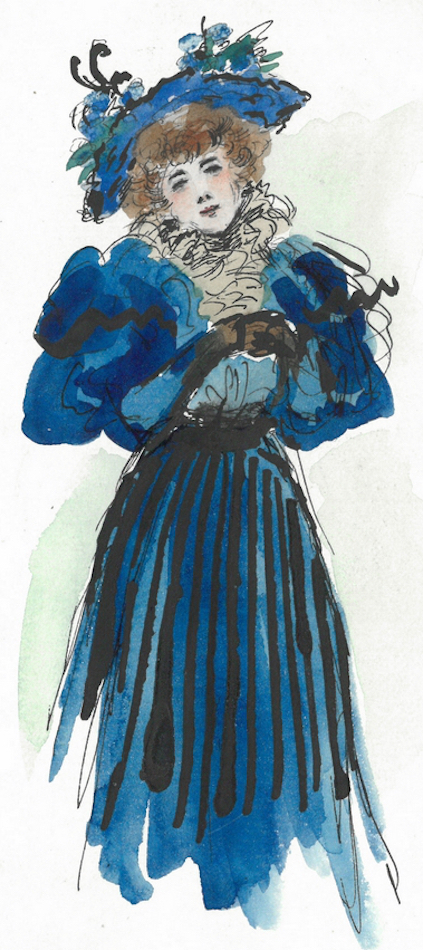
Maud Sambourne illustration, "Young Woman in Blue." 1890-1898,
Pen, ink and wash on paper.
This is a delightful exhibition, small but full of interest. It is held between the two artists' houses which are preserved in the Holland Park area of Kensington, and have a joint entrance ticket: Leighton House in Melbury Road, and Sambourne House in Stafford Terrace.
A dozen dresses are displayed, along with letters from Linley Sambourne's daughter Maud to her mother Marion, and a useful map of the shopping areas frequented by this Kensington-dwelling pair at the junction of the nineteenth and twentieth centuries. A few names on the map are still recognisable: Selfridges in Oxford Street (newly opened in a flagship building in 1909, with its very splendid main entrance), as well as Harvey Nicholls and Harrods close to each other in Brompton Road, in the area usually known as Knightsbridge. Others, such a Whiteleys in Bayswater and Marshall and Snelgrove in Oxford Street have only recently disappeared. Most had originally occupied a parade of small shops which were awkward to administer as well as being prone to disastrous fires, so during this period several were rebuilt in a grand new form, becoming known as "Department Stores." In her diary Marion mentions most of these shops: she is very dismissive of Harrods (probably before its rebuilding) calling it "a dirty place, though cheap."
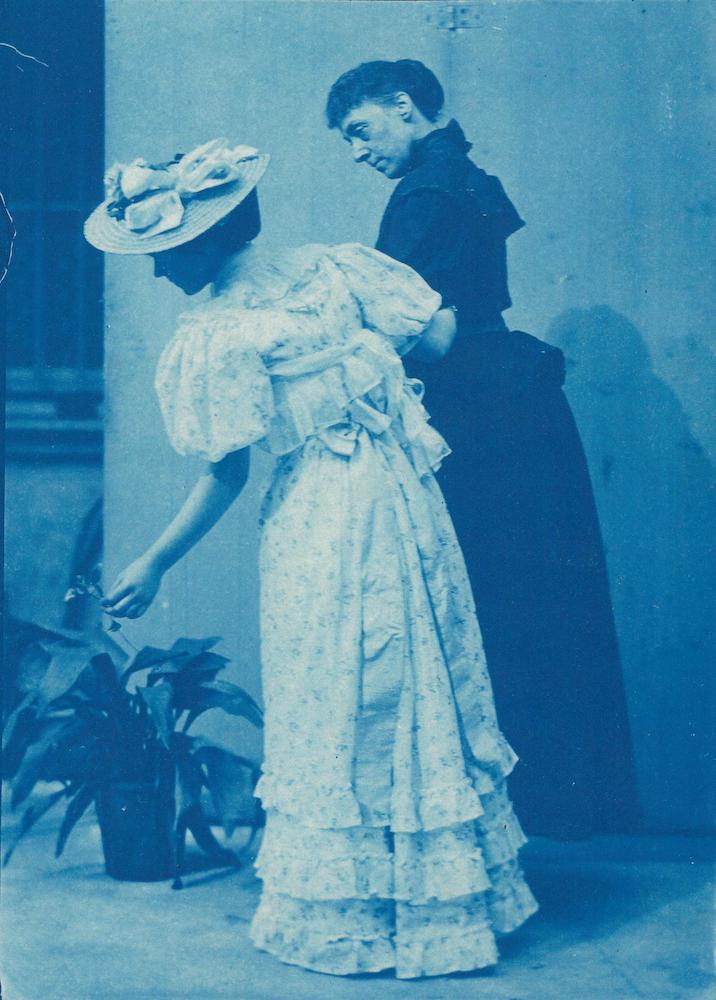
Marion and Maud Sambourne, 1890s.
Dresses for simple daywear were usually made at home, sometimes with the help of a seamstress who came to the house. The cotton summer dress that teenage Maud is wearing in the photo on the right was made by Marion; as she did not have a sewing machine it was all stitched by hand. Marion's smarter garments were made by established dressmakers and for many years she patronised one called Madame Bocquet, even though she resented how much this cost. Later she and her daughter Maud favoured Monteith Young and examples by this fashionable dressmaker are included in the exhibition.
Marion was a fussy shopper and often complained about her purchases. She was sensitive about her appearance and does not seem to have enjoyed looking in the mirror, often despairing of an ugly or ill fitting dress. She worried too about a lack of money: her husband Linley had a good job but no extra private means and she was always counting the pennies spent on housekeeping. Consequently the sum she felt obliged to lay out on dress was regrettable and her diary is full of the anxieties she felt. When it became clear that Maud was developing into a very pretty girl Marion was keen that she avoided such worries by making a good marriage. This she did after quite a long period of hesitation, eventually marrying Leonard Messel, a successful stockbroker, in 1898.
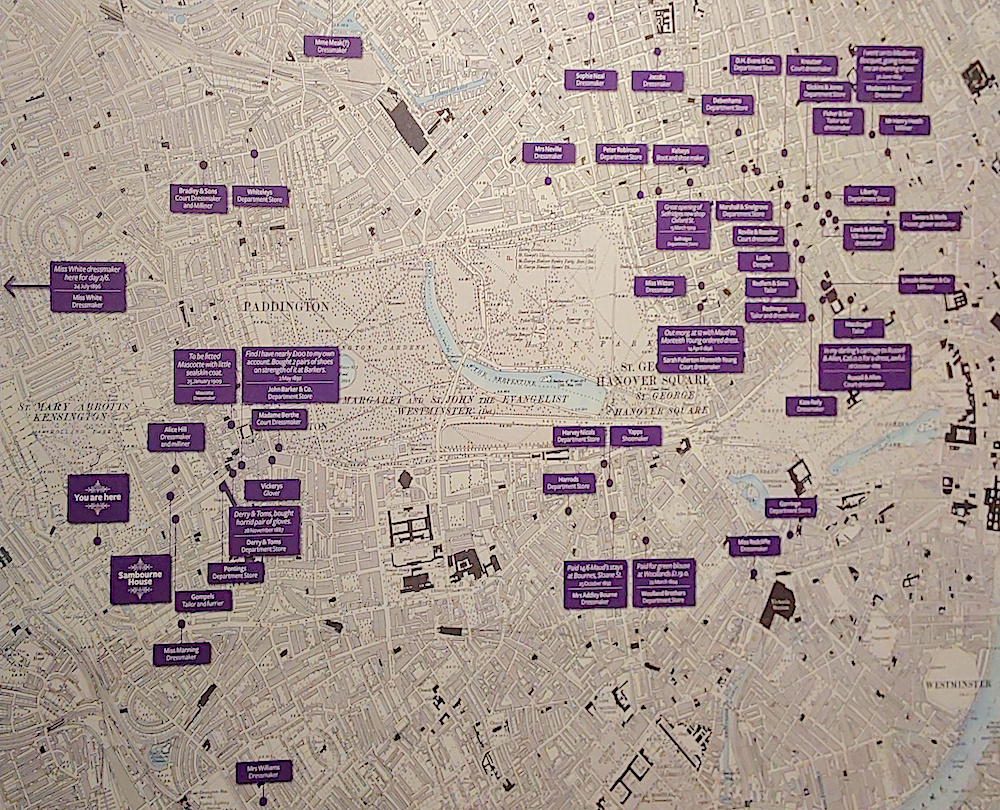
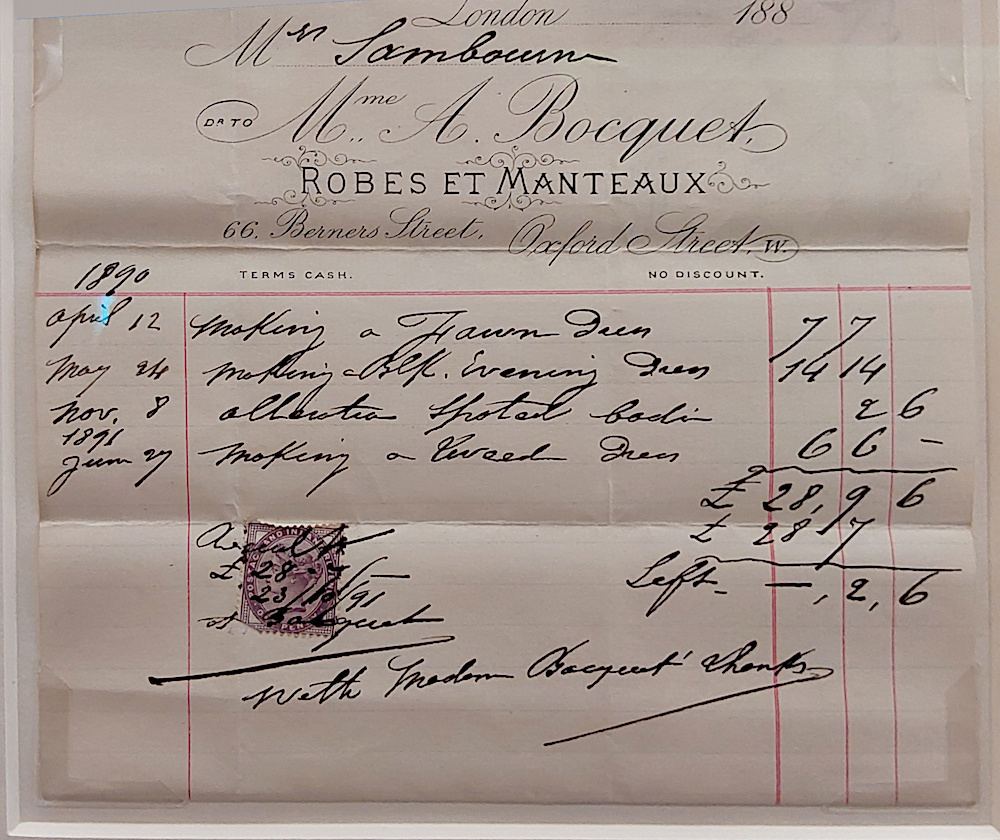
Left: Map showing the West End dressmakers etc. that Marion patronised. The "You are here" sign in the mid-left refers to the exhibition venue, Leighton House. Close by is Sambourne House, the women's own starting point. Almost on a level with Leighton House, right in the centre, is Harrods, although this was clearly not a favourite destination. Harvey Nicholls is just above it. Right: A bill from Madame Bocquet of 66 Berners Street, off Oxford Street, for making and altering clothes, dated 1890 and 1891.
Marion did not like being photographed and it was probably at the insistence of her husband that she had a professional photo taken during his last illness in 1910. It is a happy coincidence that the short fur jacket that she wore for this sitting has survived.
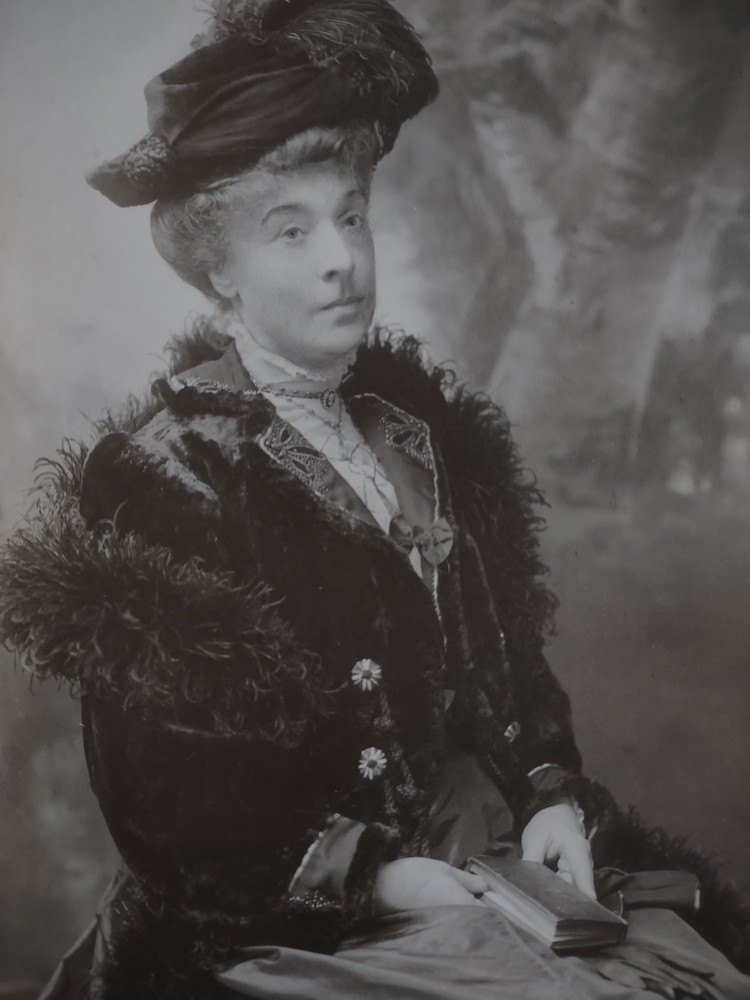
Marion Sambourne in 1910,
wearing a beaver fur jacket.
It is also interesting to note that "photoshopping" was practised even then, Marion has no lines on her face or bags under her eyes, characteristics very evident from the few photos we have of her taken by Linley Sambourne in natural daylight.
Maud had none of her mother's problems. She was blessed with confidence, good looks and unerring dress sense so the costumes exhibited here are all delightful. She was a good needlewoman and often added extra embroidered detail to her dresses. After her marriage there was no anxiety over money and she loved to help her mother with thoughtfully chosen gifts, often to do with fashionable accessories. Most photographs of Maud show her in the frothy lacey style that she made her own. (Other than a long string of pearls she did not favour jewellery.)


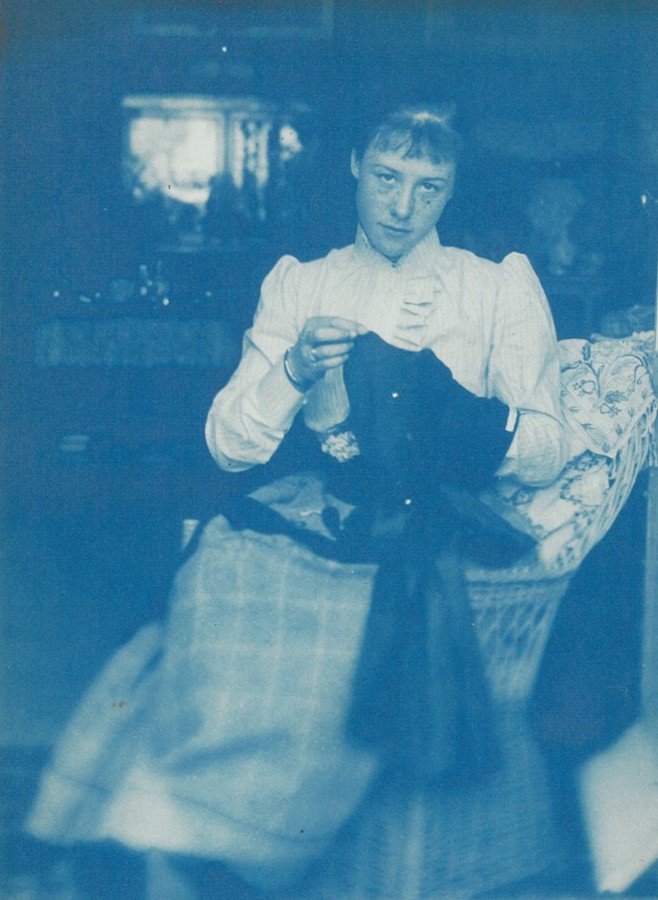
Left to right: (a) Marion again, in 1910, wearing a dress with intricately decorated sleeves. (b) Examples of the rich materials and elaborate adornments of the dresses: these are from Maud's dresses. Maud collected embroidered pieces and also made her own decorations, as seen on the centre panel of the brown dress. (c) Maud in 1889, engaged in some of her skilful needlework.
In old age, Maud favoured a soft cardigan style, but these costumes have not survived. For further interest, Brighton Museum owns several of her outfits including her wedding dress by Monteith Young and some clothes that belonged to her daughter Lady Rosse. Three generations of a family that seldom threw anything away can thus be studied.
Links to Related Material
- What men and women wore in the 1890s
- A Victorian Household, by Shirley Nicholson (review by John Hilary)
Created 8 April 2024